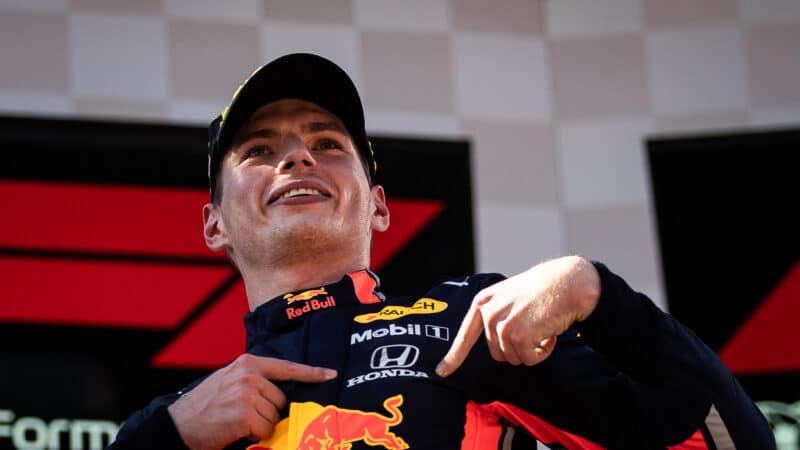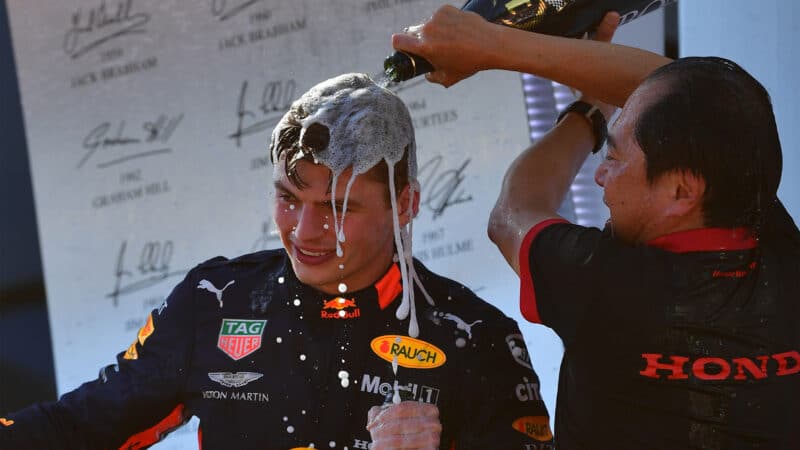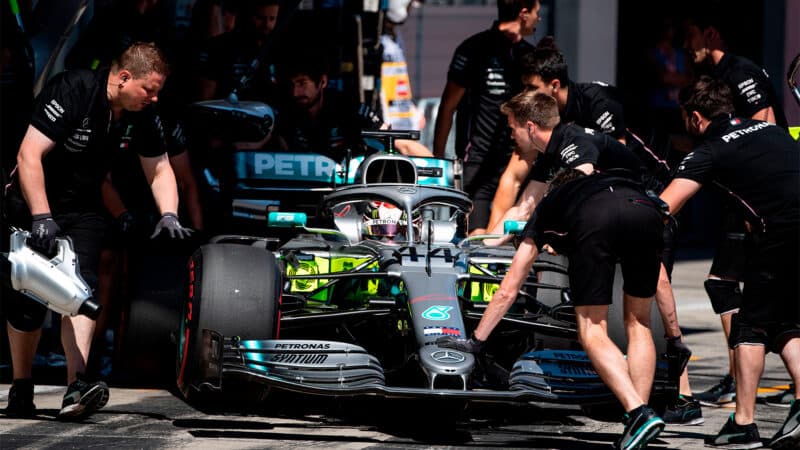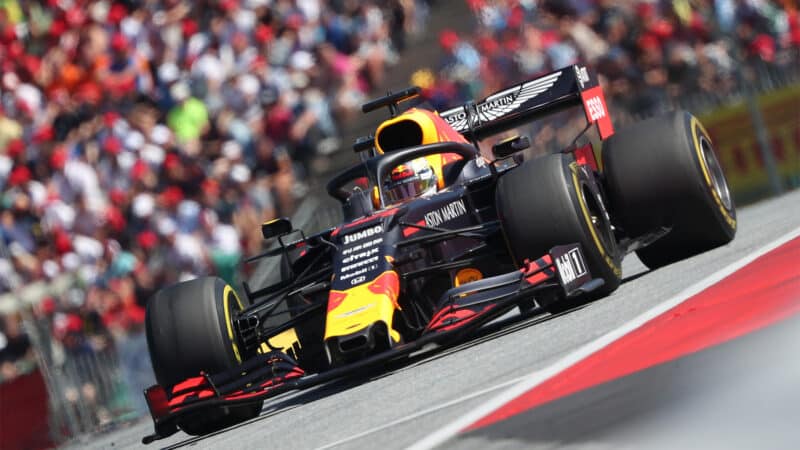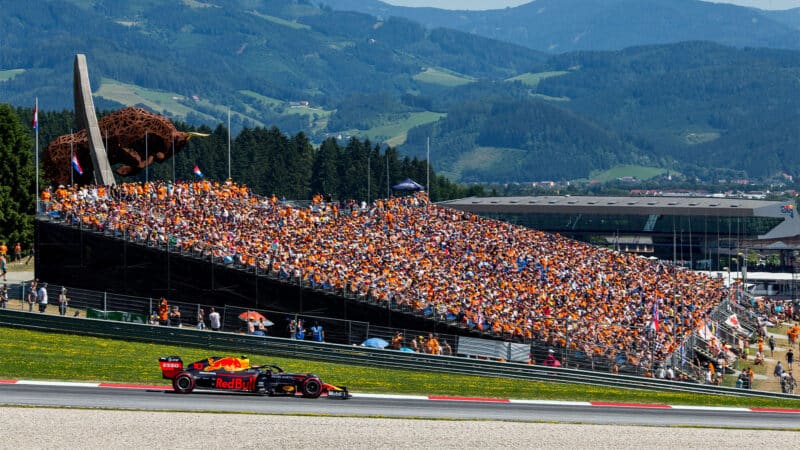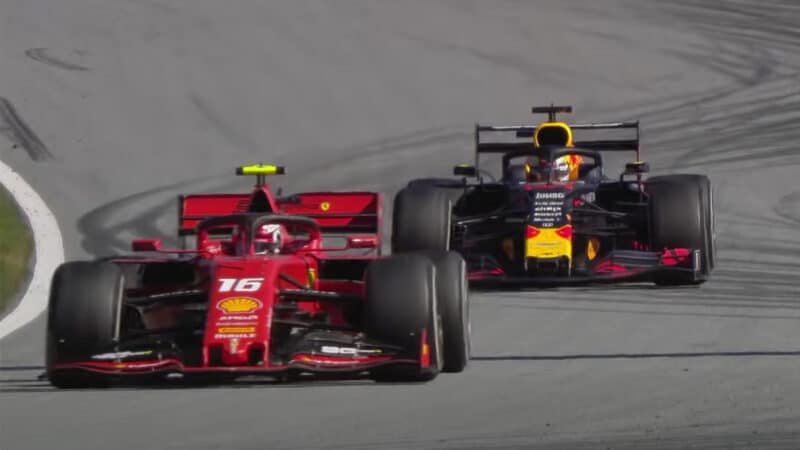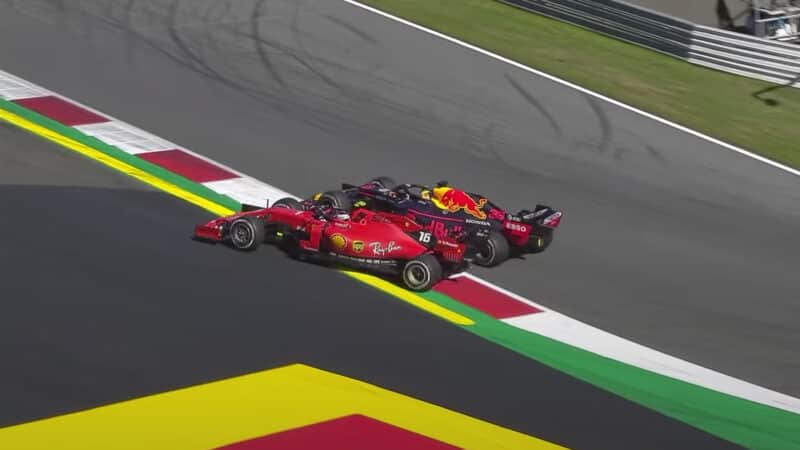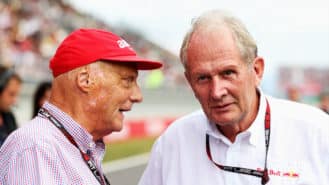Leclerc burst into an easy lead and began sprinting clean away. The two Mercs were in no position to chase the Ferrari, regardless of tyre compounds. Their limitation was engine temperatures – control electronics and tyres too but mainly engine. These conditions were beyond the design limits of the car – and they couldn’t even begin to contemplate running close behind other cars. So Bottas backed away from Leclerc and Hamilton did the same to Bottas.
At Ferrari they were concentrating on getting their softs to do a decent stint in these hotter-than-forecast temperatures so were not perhaps monitoring just how slowly Mercedes was running. They were taking their cue from Bottas’s pace as to how fast to allow Leclerc to run. It made sense in the moment but in hindsight contributed to them losing this race.
Verstappen meanwhile had dropped down to a disastrous eighth place, behind team-mate Pierre Gasly who had gone around his outside through Turn 3. Verstappen successfully retaliated into 4, but locked up a front tyre in the process. So now he was carrying a flat-spot for all the first stint, and running seventh. What a disaster. Actually, that bogging down off the startline was what was going to win him this race… That and Ferrari’s misreading of how slow Mercedes actually was.
Once he’d quickly got 2.5-3sec over Bottas, Leclerc – with concerns going in about getting the soft tyres to do a long enough stint in this heat – was guided into easing off. He was bursting to be let off the leash, but Ferrari held him firmly on it.
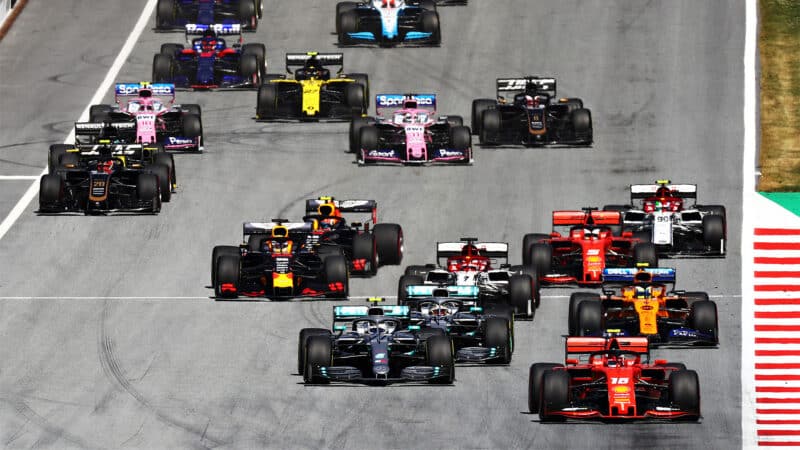
The partisan crowd watches in horror as Verstappen’s Red Bull is swallowed by the chasing field
Getty Images
Why Ferrari began on the softs
Ferrari had chosen to run the soft tyre in Q2 – and therefore into the first stint of the race – rather than the apparently safer medium chosen by Mercedes and Verstappen. But there was a sound logic behind that. They’d had the pace to lock out the front row. The superior traction on the softer tyre would pretty much have guaranteed they’d have held those positions into the first turn and established 1-2 track position. This would have enabled the second car to have kept the Mercs and Verstappen off the backs of the leader and thereby not force a tyre-killing pace on the softs. But that plan had gone awry with Sebastian Vettel’s Q3 mechanical problem.
So now, without the buffer of a team-mate, Leclerc had to run long enough on his softs that his second stint wasn’t compromisingly long or – even worse – be forced onto a two-stop. The pre-race Pirelli estimation was a maximum range of 25 laps for the softs, 44 laps for the mediums. Hards then for the second stint to the end. So Ferrari logically figured it just needed to keep Leclerc out of undercut range around the pitstop window and run as gently as possible within that limitation. That was the mindset going in and perhaps that blinkered it to the possibility that this wasn’t going to be the pattern of the race at all.
Covering Mercedes. The trap is set
Ironically, it was Vettel’s pace as the pitstop window opened that played its part in Ferrari’s own downfall. Seb began stepping it up from around the 17th lap – and the Merc drivers had nothing with which to respond. No higher engine modes and they were lifting and coasting to a ridiculous degree to keep the temperatures down – up to 400 metres before the corners. Because they were closely spaced, there was a real danger that Vettel was going to jump them both. Before it was too late, Mercedes decided it would have to act and instructed its lead car (Bottas) to come in at the end of the 21st lap.
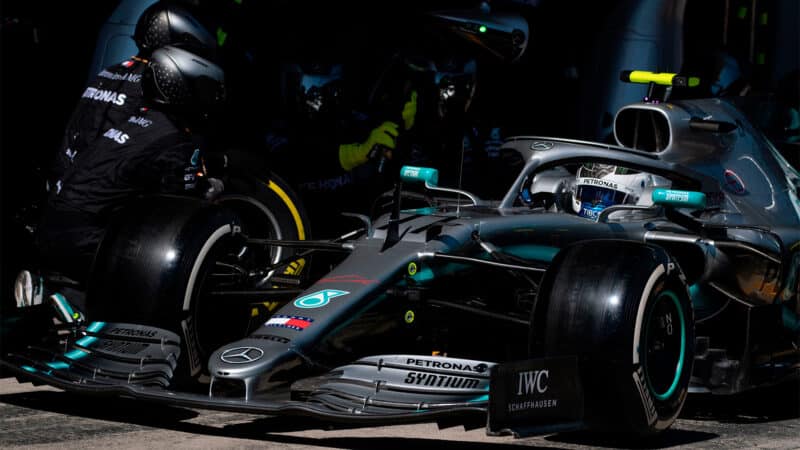
Dominoes begin to fall – Bottas pits to cover a resurgent Vettel
Getty Images
Ferrari had just instructed Vettel – at late notice – to do the same. The order from the Ferrari pitwall to the garage went out late. Half the mechanics – those on the radio system of communication – heard it. The other half – those on a cable communication – did not. So two of Vettel’s wheels were not ready as he stopped. He was stationary for over 6sec. Had it not been for that, there’s a good chance that Vettel would actually have jumped Bottas in the pits – for Mercedes had been forced to hold him as Vettel was about to cut across their bows on his way to the adjacent Ferrari pit.
